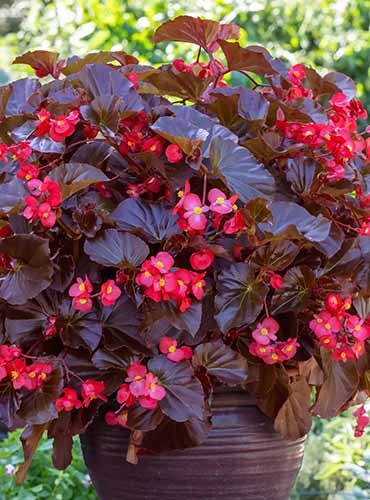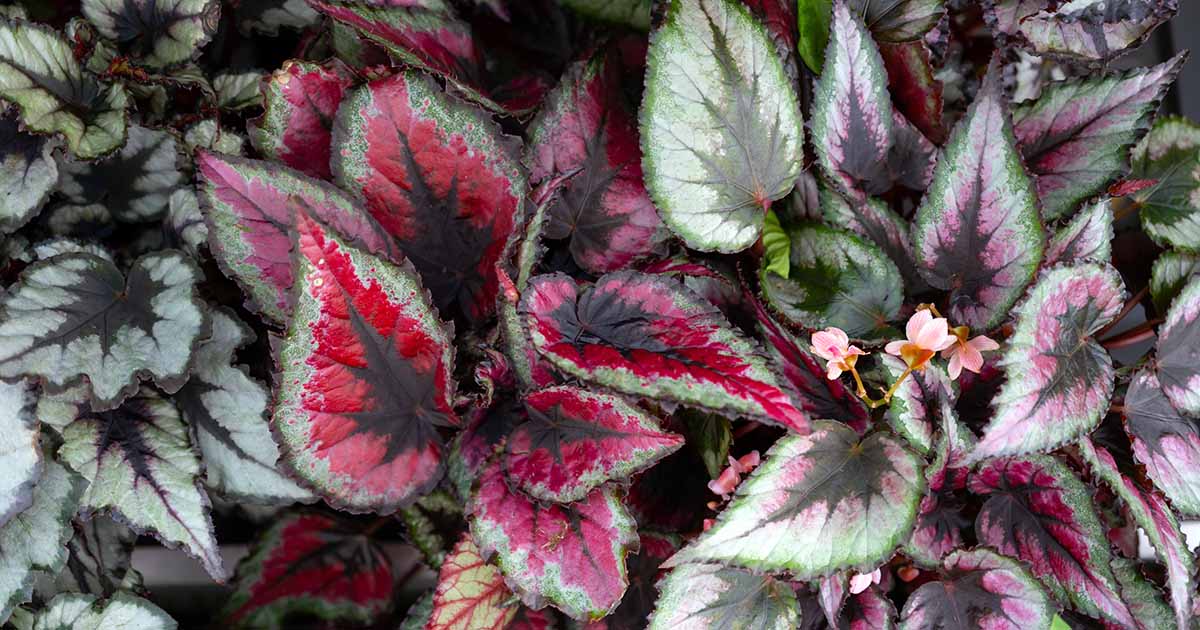
If you could take a leisurely stroll across all of the countries near the equator, in all the tropical and subtropical areas, you might be lucky enough to witness the 2,000 or so begonia species in existence growing in their native habitats in the wild.
From misty oceansides to high-elevation forests, they come from a diverse range of climates.
It would be an exciting adventure to check them all out. The only problem is that you probably wouldn’t be able to tell what type you were looking at from one to the next…
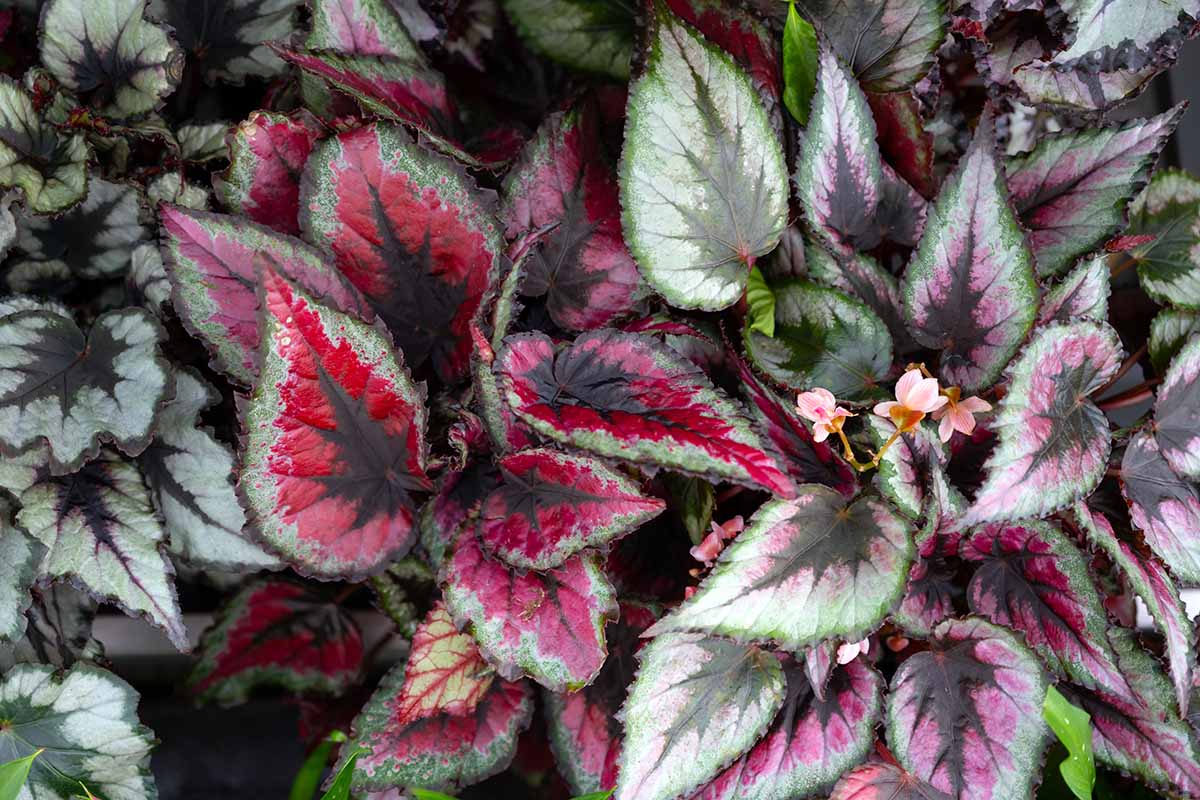
We link to vendors to help you find relevant products. If you buy from one of our links, we may earn a commission.
Okay, so you probably won’t go on a world-round wander anytime soon, but even if you’re just shopping at your local nursery, it can still be next to impossible to identify the various begonias out there if you aren’t some sort of expert.
Heck, even the experts struggle.
Is this one of those wax hybrids with big blossoms? Or is this the kind that doesn’t flower well but has gorgeous foliage? Maybe it’s both?
We’re going to help you figure out how to identify begonias based on a few key characteristics.
After examining the foliage and stems, you’ll be able to confidently narrow down what you’re looking at, no expert knowledge required.
Here’s what we’ll discuss to help make that happen:
While the characteristics of the flowers and leaves are the most obvious things we can look at on a plant, the stems and roots can give us an even better idea of the species of begonia.
We can use all four elements to make an educated guess about the identity of a particular plant.
Though they vary wildly in appearance, all begonias have alternate leaves with stipules, which are tiny structures that grow at the base of a leafstalk.
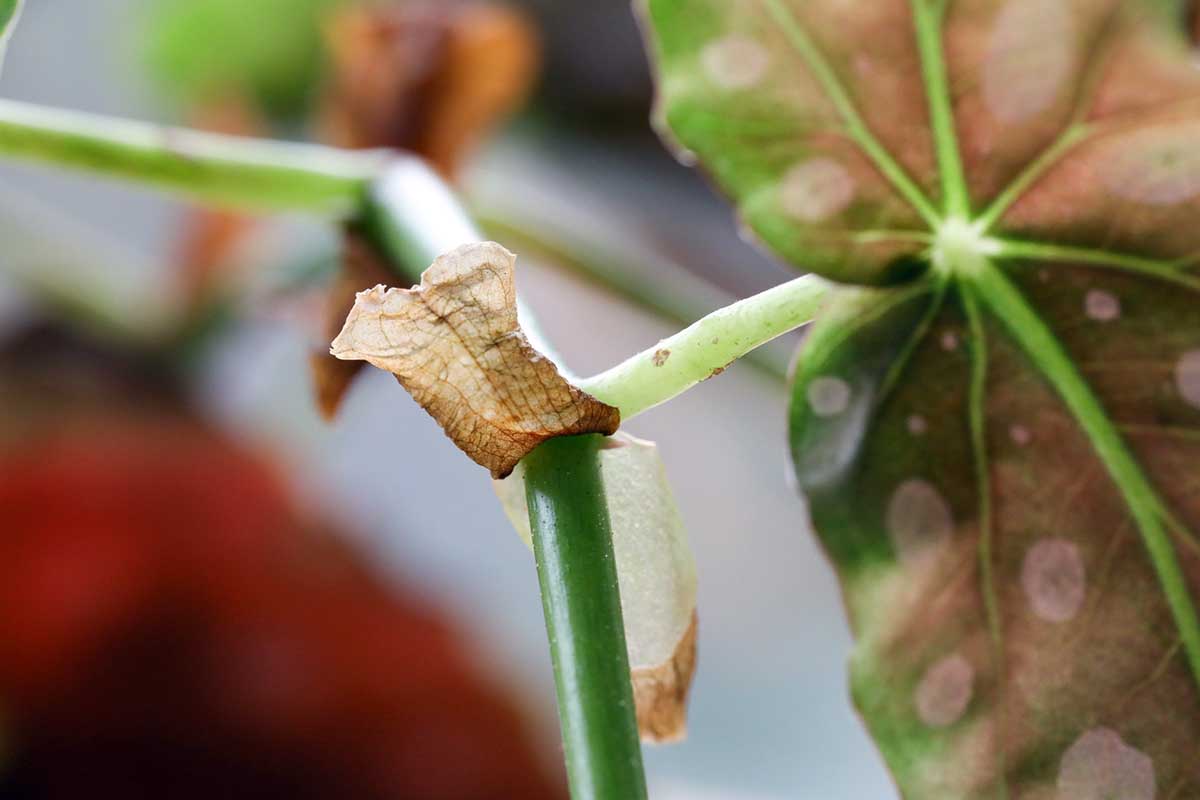
They all have separate female and male flowers, plus some other qualities that only botanists will really care about, like inferior ovaries and centripetal stamen initiation.
Most commonly cultivated varieties have asymmetrical leaves, fleshy stems, and fairly prominent flowers. But there are exceptions. B. bogneri looks more like grass, for example, and you might not even notice the flowers.
Don’t worry, you don’t have to memorize all this! The important thing is to be able to take a look at the leaves, stems, and flowers, plus the roots, if you can.
Begonias are actually classified by the American Begonia Society by the kind of roots they have: fibrous, tuberous, or rhizomatous. Of course, all types have some fibrous roots, but this category refers to those that solely have fibrous roots.
Let’s talk about that group first. Then, we’ll talk about the different leaves you might come across and how to categorize them.
Fibrous Rooted
Fibrous-rooted begonias have purely fibrous roots without any tuberous or rhizomatous roots.
But you don’t need to dig up the plant and examine the roots to determine if that’s what you’re looking at. There are other clues.
Look at the stems and leaves for a hint.
If your plant has stems that look kind of like bamboo, meaning they are straight, have long internodes, and have little bumps where the leaves emerge from, you have a cane-like type.
Cane-Like
Cane-like begonias have become much more popular in recent years. I think that has to be because they’re easygoing, and many have eye-catching foliage.
Obviously, this group stands apart because of its cane-like stems that give it some resemblance to bamboo. Beyond the cane-like stems, you can look to the leaves to help define this group.
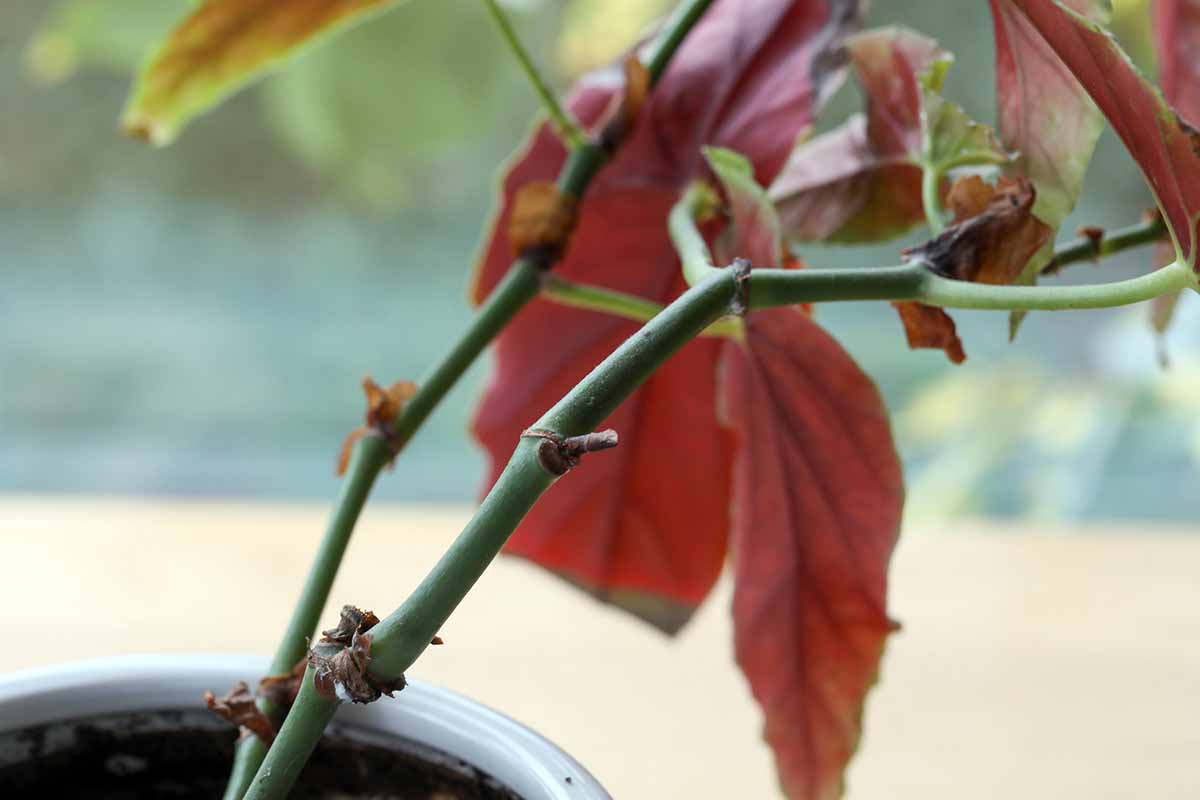
Most of the cane-like types on the commercial market have some amount of silver spotting on the top surface and purple on the underside, with most having some purple on the upper side of the leaves as well.
The leaves emerge from a swollen node on the stem, another characteristic that lends to the bamboo-like resemblance.
For example, angel-wing begonias like the wildly popular B. maculata, with its long leaves speckled in shiny silver dots, are in this group.
If you see the characteristic angel-wing leaf shape, it’s probably in the cane-like group, though many rex types have this as well.
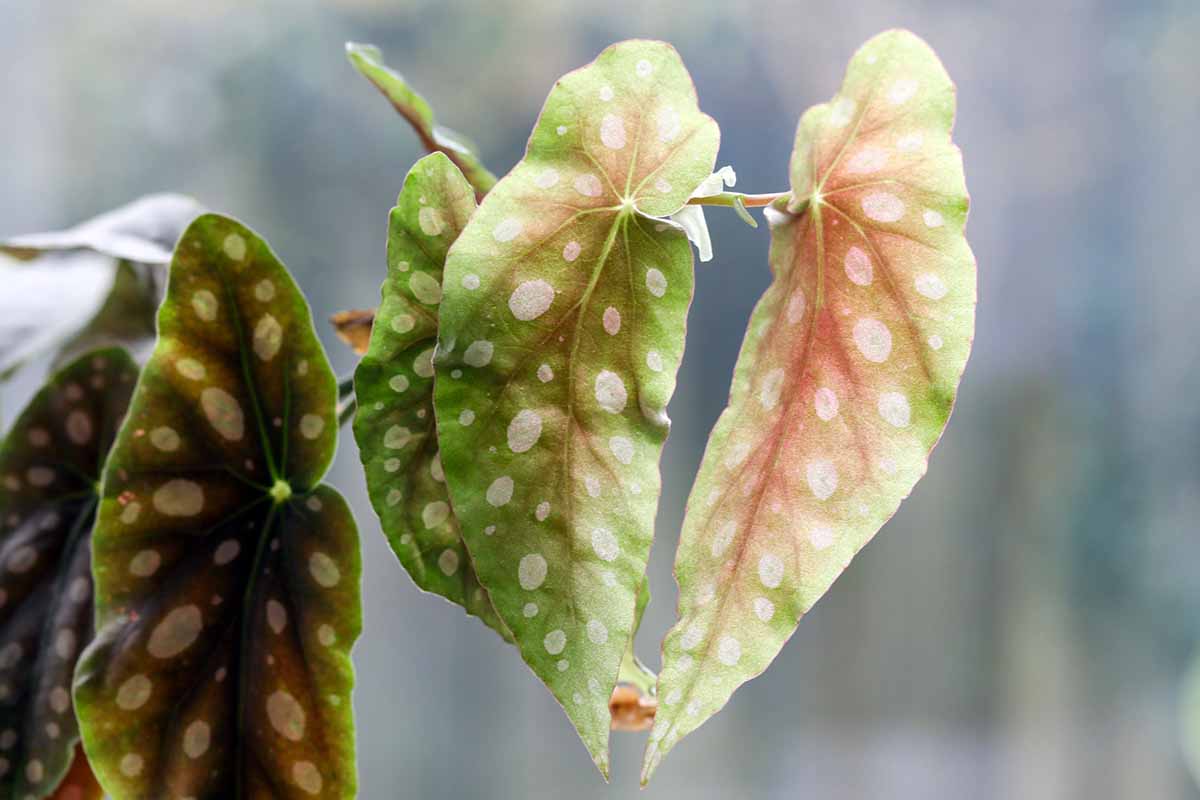
Within this group, there are three types: ‘Lenore Olivier,’ mallet, and Superba. There are around 80 species and thousands of cultivars in the cane-like group.
Most of them are grown for the foliage, but some have large cascading clusters of pink, red, white, or orange blossoms.
All Superba types have lobed or cleft leaves, silver markings, and purple coloration. Those of the mallet type are maroon or dark pinkish-red, and those of ‘Lenore Olivier’ are smooth-edged and solid green.
If you’re in the market for one of these, you can bring home a beautiful B. maculata plant with its polka-dot foliage in silver, green, and red from Costa Farms.
It’s available via Amazon as a 14-inch-tall plant in a decorative pot.
Semperflorens
Historically, this has been the most popular group. Also known as wax begonias, these can be identified by their thick, succulent, waxy leaves.
The foliage is usually green or bronze, but some cultivars are variegated or even have white young leaves.
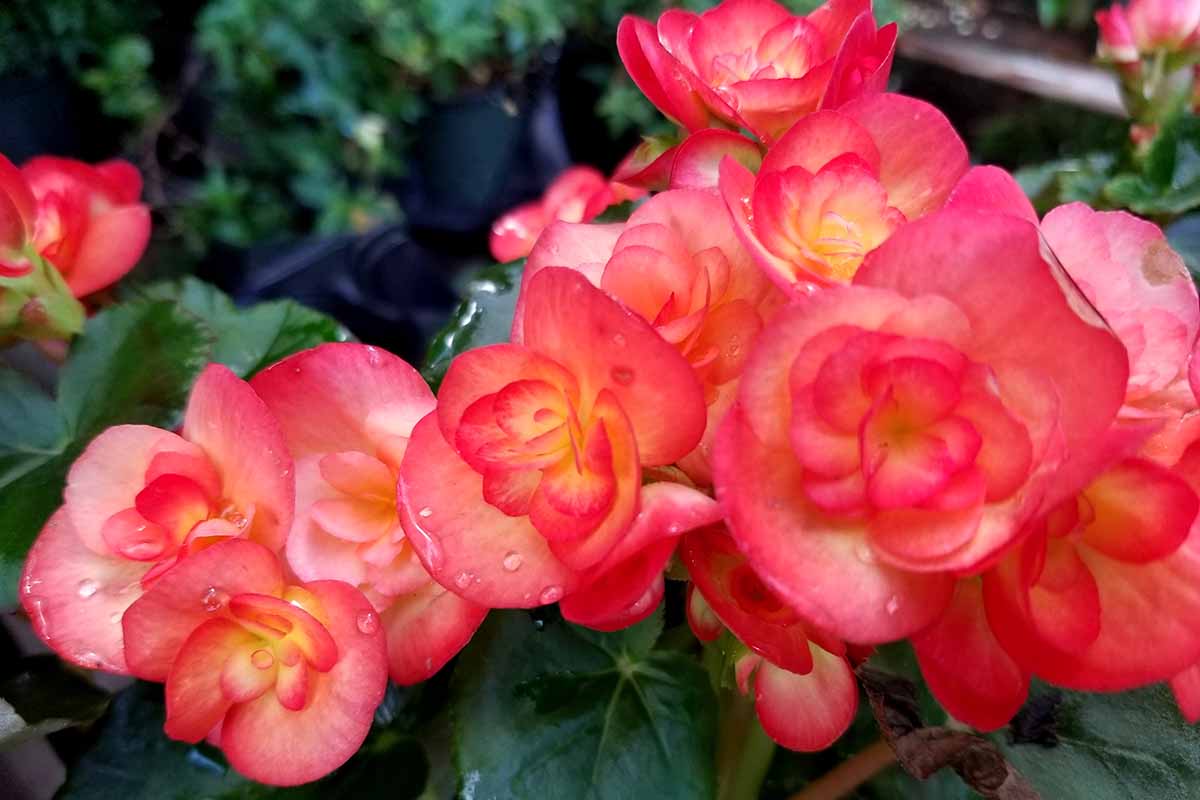
Gardeners love these because they bloom nonstop in bright pink, white, and red. Plus, they’re relatively drought-tolerant, and seed propagates readily.
Most that you’ll come across at stores are hybrids, and B. cucullata is usually one of the parent species.
The deep bronze leaves of ‘Viking XL’ are enough to recommend it, but the vibrant, inch-wide, red flowers steal the show.
It’s a variety that’s also disease-resistant, and maintains its compact shape without becoming leggy.
Nab a four-plant bundle at Burpee.
Shrub
Multiple stems growing out of the ground point to the shrub group.
It’s a little hard to define this group just by the foliage. The leaves can be smooth and shiny, or hairy and velvety. So, look at the stems first.
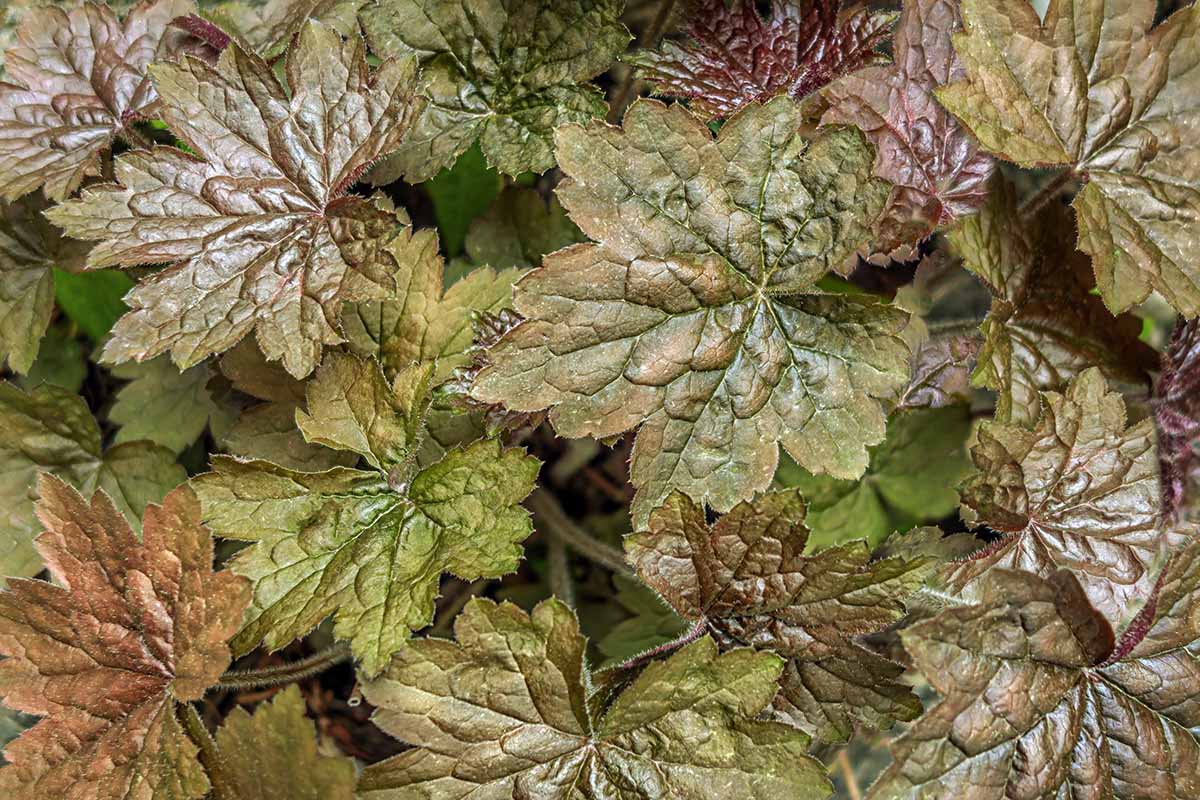
There should be lots of them, rather than a single or small number of stems. Those stems should also have lots of branches.
Because the foliage is so diverse, this group is subdivided by leaf type. These groups are:
- Bare
- Distinctive
- Hairy
- Miniature
Bare types are hairless (glabrous). Hairy, of course, have fine hairs on either or both sides. Miniatures have tiny leaves on correspondingly small plants.
Distinctive is kind of a catch-all group for the plants that have unusual or uniquely interesting leaves, like heavily lobed, palmate shapes.
The shrub group is primarily grown for the foliar display, but some have pretty, long-lasting flowers, usually in white but sometimes pink or red.
Examine the growth of B. metallica, as pictured above, to get a good idea of what they look like.
Thick-Stemmed
This group is identified by, of course, the thick stems, but also the leaf growth.
As the stems age, all the lower leaves drop off, leaving just those at the tip of the stems. The foliage can look like that of those in any other group.
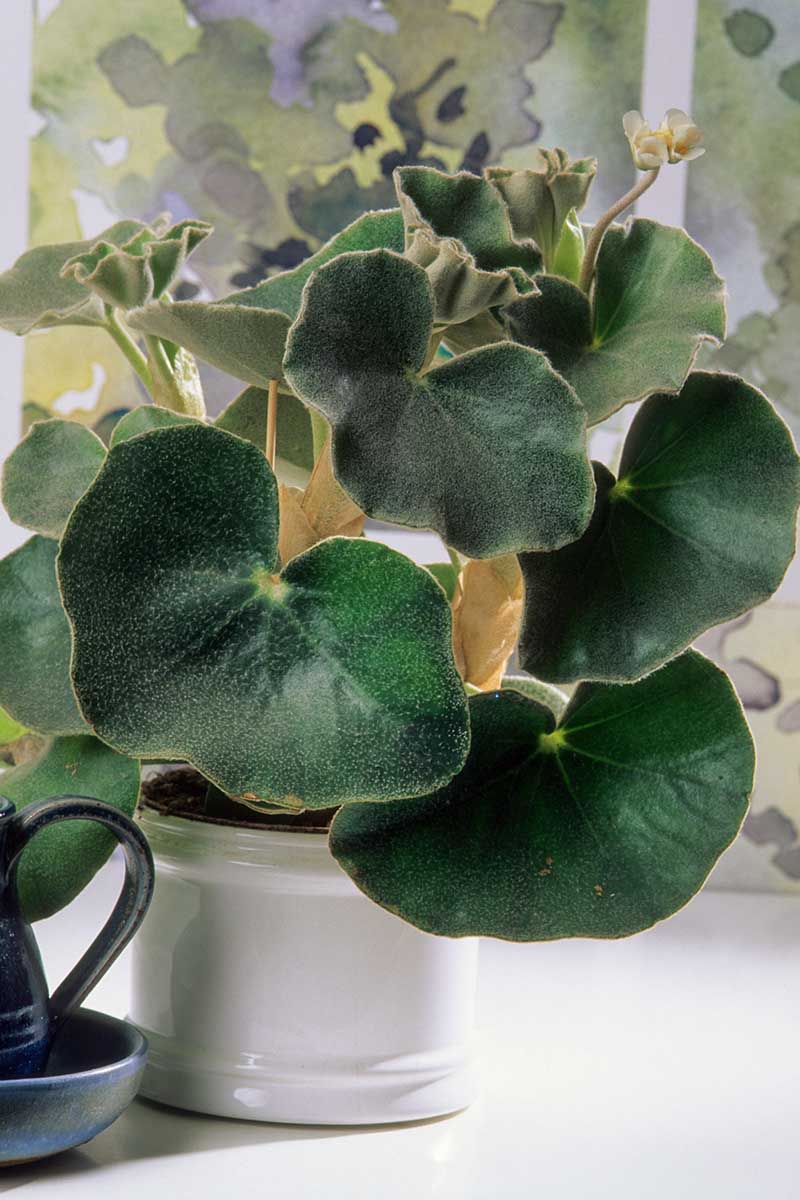
Leaves can be waxy, hairy, velvety, or smooth, and smooth-edged, toothed, or lobed. They can be green, bronze, red, or purple, and might have silvery markings.
Common hybrid cultivars and species include B. ‘Bangles,’ B. egregia, B. ludwigii, B. rigida, B. ‘Rudy,’ B. venosa and B. vitifolia.
These are some of the most difficult types to grow because they’re picky about their conditions, so you don’t see a lot of them.
While you can pinch them to encourage branching, they typically only produce one or two stems with no branches, which makes them less visually appealing to some growers. That’s another reason why they aren’t common.
Trailing-Scandent
As you may have gathered, this group is defined by its trailing, arching growth habit.
Some can be trained as climbers and some will trail over a wall or pot. Many have beautiful flowers, though others are grown for their foliage alone.
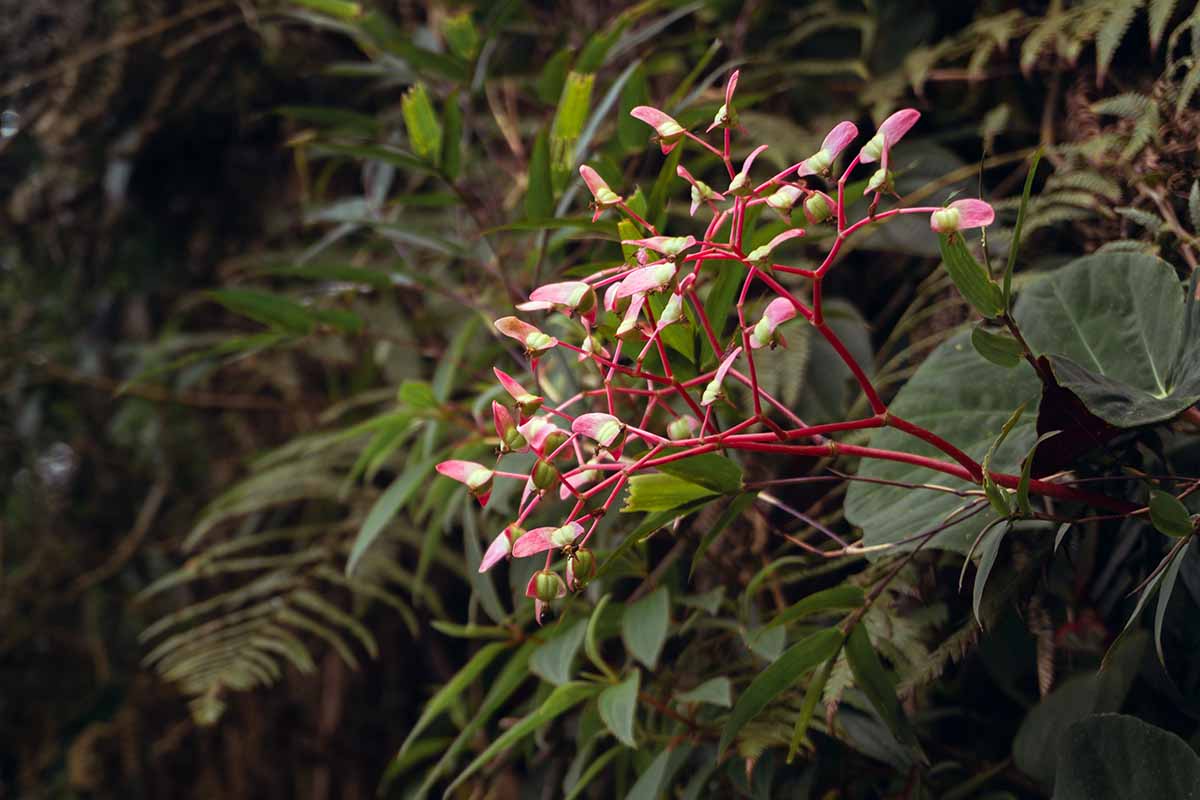
The leaves are typically round, heart-shaped, or oval, with smooth or toothed margins.
The surface can be smooth or hairy, and it might have raised areas. Most have relatively small leaves. The flowers are usually pink or red.
B. convolvulacea, B. glabra, B. molleri, B. radicans, B. solananthera, B. thelmae, and their hybrids are the most common types.
Rhizomatous
If you were to dig down just below the soil surface and do some exploring, you’d find succulent, horizontal roots for all of the begonias in this group.
These rhizomes are actually an extension of the stems of the plant growing underground.
Rex-Cultorum
This is, by far, the most common type of rhizomatous begonia. These can be identified by looking at the foliage.
It’s colorful with green, purple, red, silver, or any combination of these. They can also have reflective silver markings.
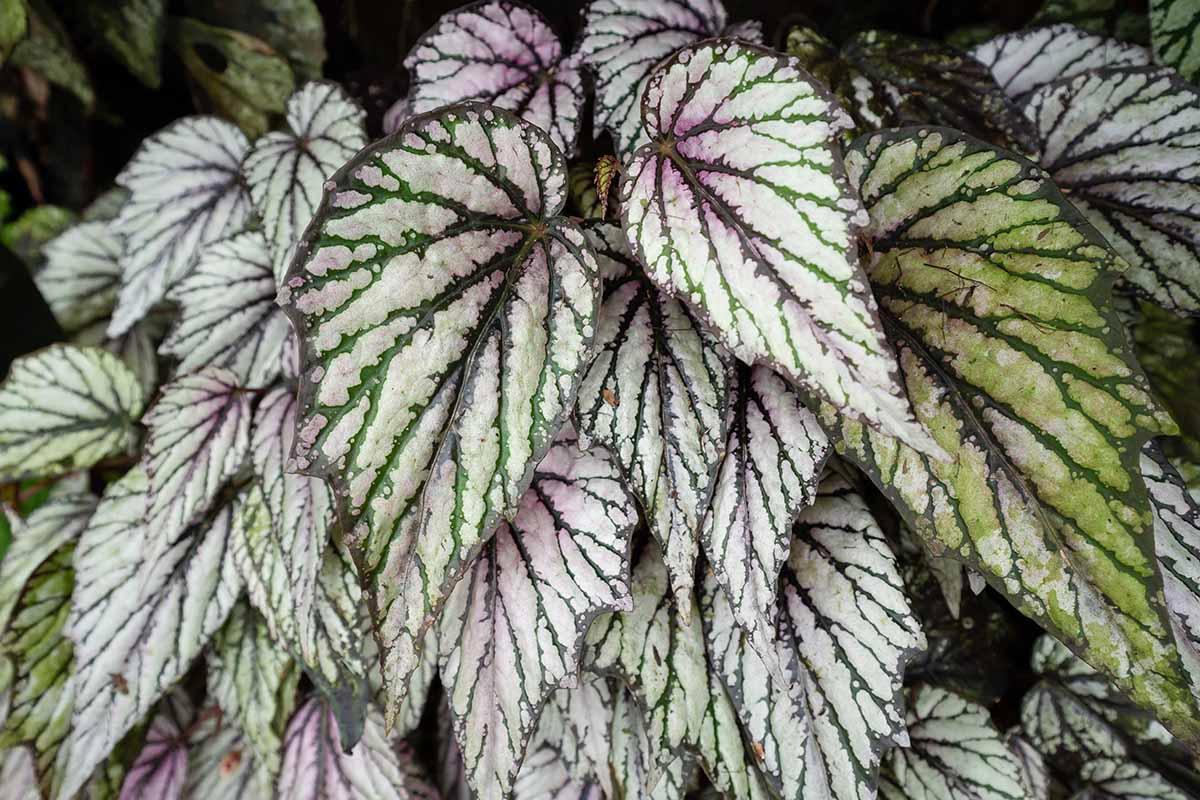
This type can be confused with cane-like begonias, and the only way to be certain is to look at the roots.
Most of these are cultivars of B. rex, of which there are over 4,000, but there are lots of hybrids, too. These are grown for their foliage and not so much for the blooms, which are small and lack color compared to many others.
Learn about growing rex begonias in our guide.
Upright Jointed
The plants in this subgroup might be mistaken for cane-like types at first glance. Beyond the different roots, these plants tend to branch out more than the cane-like types.
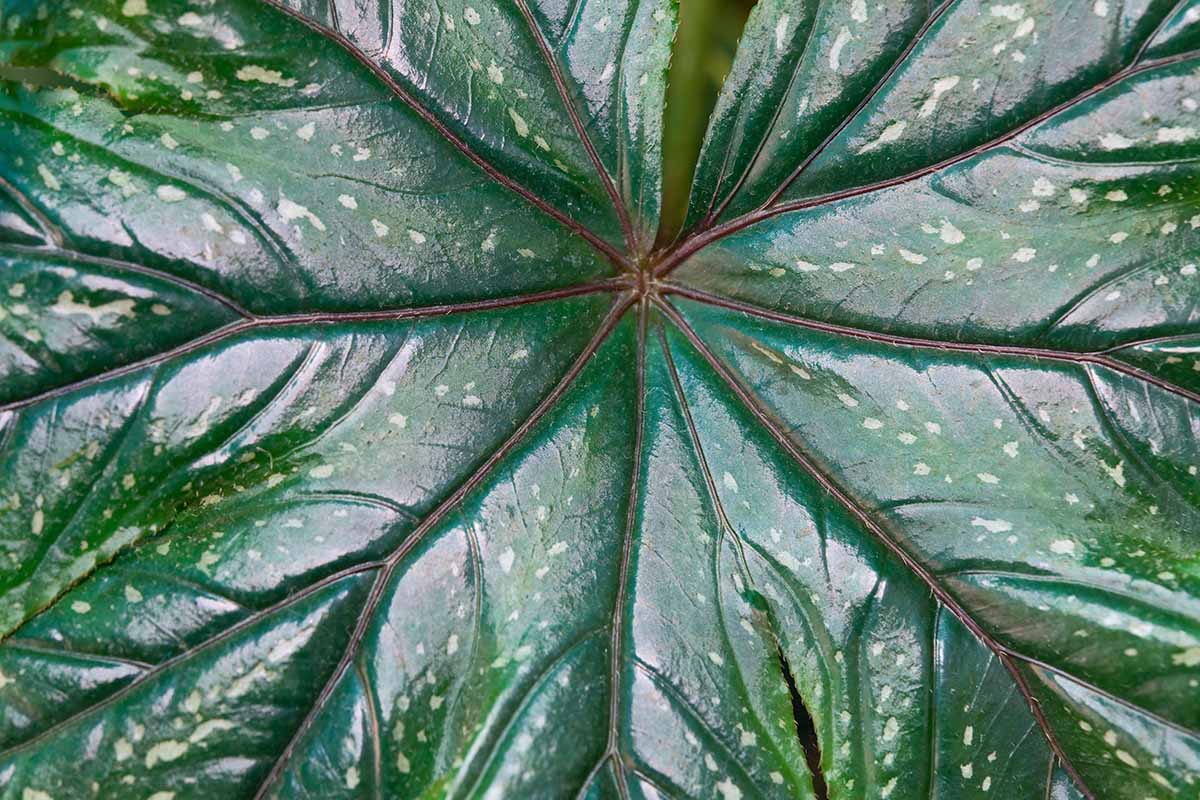
Look at B. diadema for a good example.
Tuberous
Tuberous begonias form large tubers as a storage mechanism to get them through the dry season. These are typically grown for the large flowers.
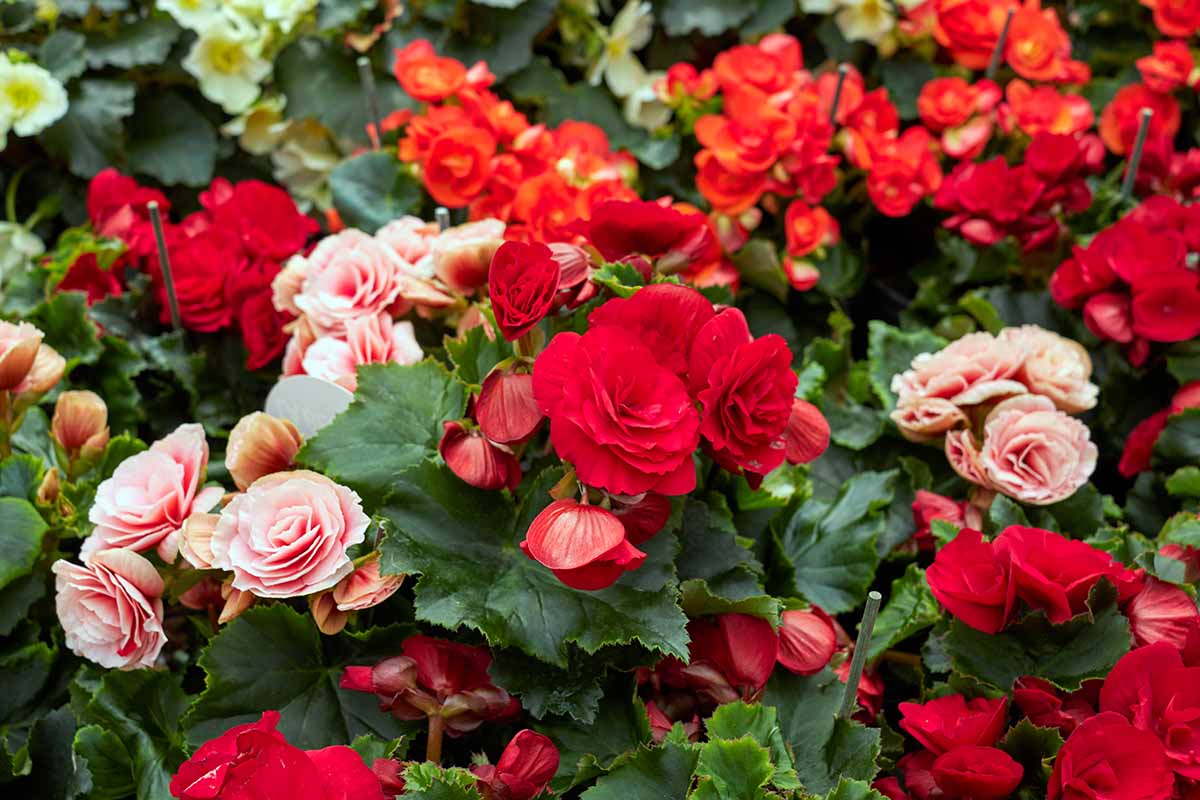
Now, don’t confuse ”tuberous begonias” (B. x tuberhybrida) with those that have tuberous roots.
Tuberous begonia is the common name for tuberous hybrids, but there are many species that have tuberous roots as well.
The × tuberhybrida members of this group have the largest blossoms of all begonias, as well as the biggest range of flower colors and patterns.
They’re some of the most popular types, and you can read all about them in our guide to growing tuberous begonias.
The foliage is typically large and round. The leaves are dark to medium green on the upper surface and lighter green on the underside, with or without red veins.
Of course, there are variations, with some with toothed or lobed margins, but that’s the most common.
Augustia
There are 12 species from tropical East Africa in this group, all with tuberous roots.
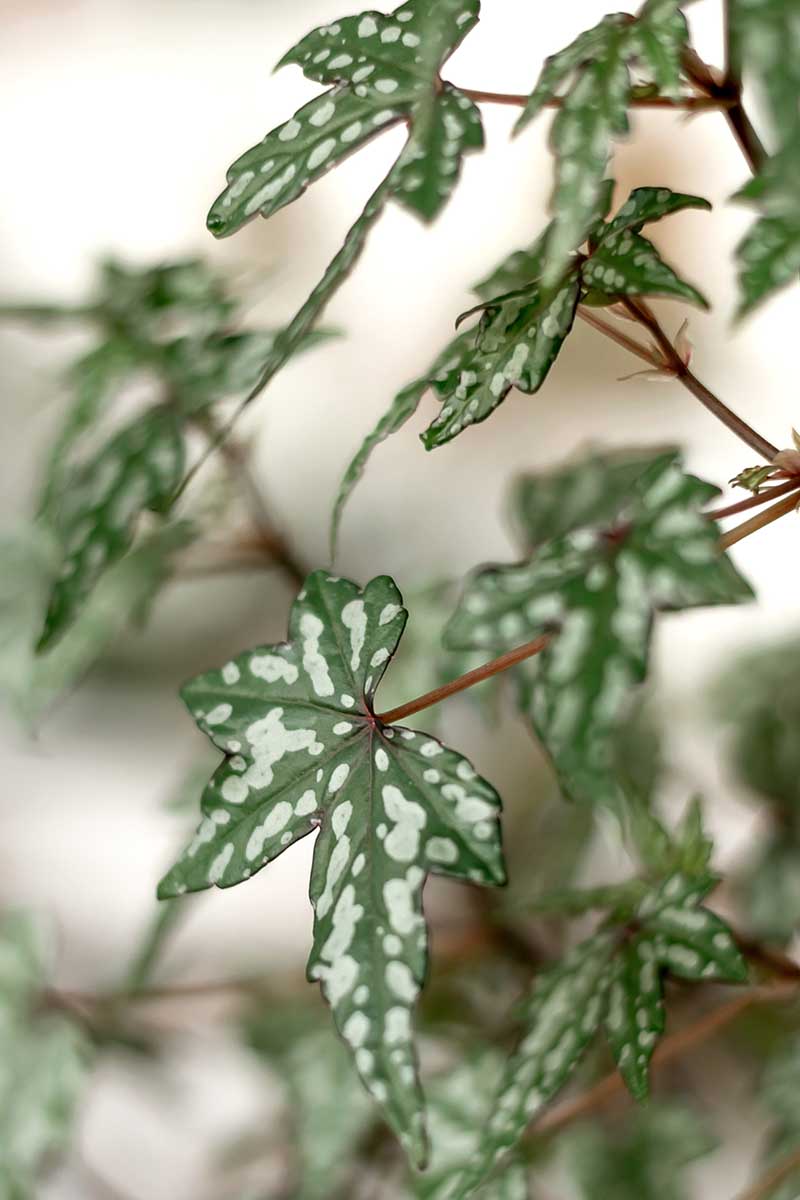
B. dregei and B. sutherlandii are the most common in cultivation.
B. dregei has green foliage with some amount of red or purple, and plants might have white or silver spots. B. sutherlandii features pale green foliage with pink or red-tinged veins or edges.
Bolivian
B. boliviensis, known as Bolivian begonia, has leaves with a dark green surface and paler green undersides, both with fine hairs.
They can be lanceolate to ovate and are always asymmetrical. Some have a toothed margin.

These plants have a pendulous growth habit and vibrant red flowers.
Elatior
Also known as Cheimantha, Hiemalis, or Reiger, this subgroup is made up of tuberous hybrids, and it’s kind of a catch-all for those that don’t fit in other groups.
Many have B. dregei, B. grandis, B. x semperflorens, or B. socotrana in their lineage.
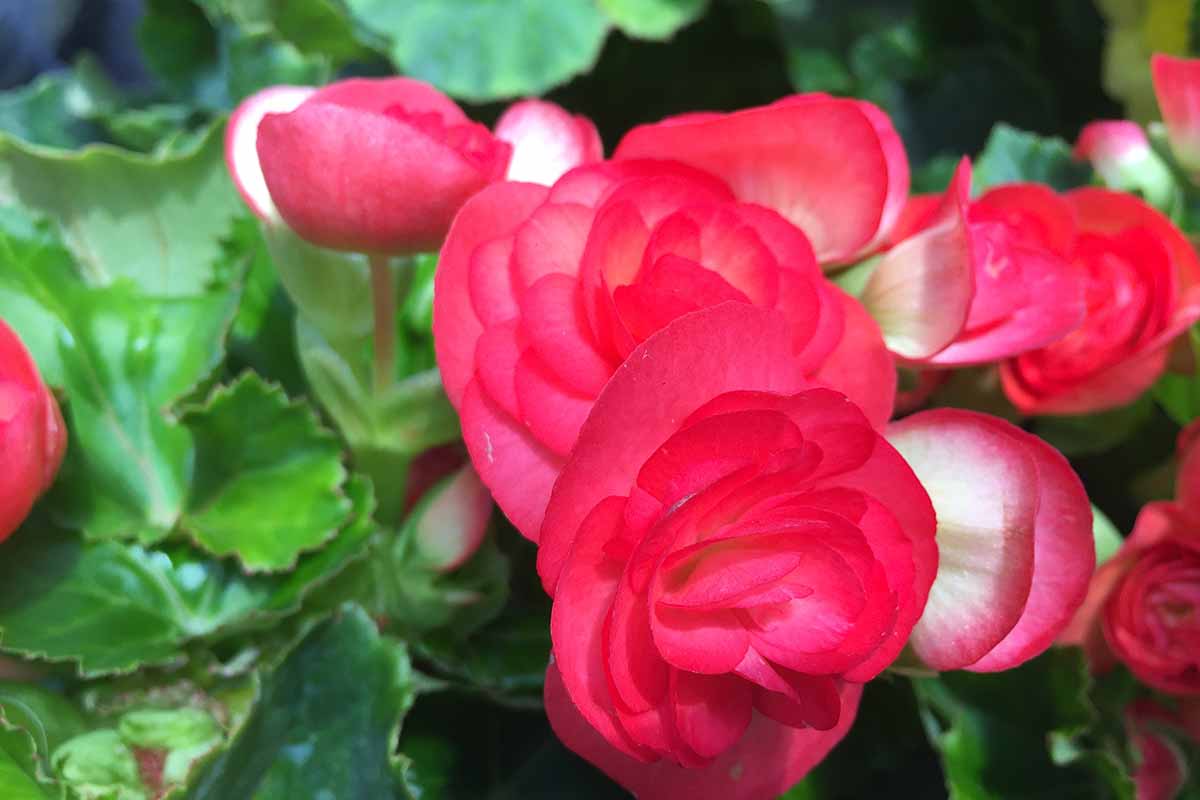
Many are winter flowering and have masses of pink, salmon, or red blossoms. You’ll often find them sold as holiday, Christmas, or yule begonias.
Identifying Begonias by Their Leaves
You absolutely can not identify a begonia by the leaves alone. There are just too many species with similar-looking leaves. But they are a good place to start your investigation.
Note the most defining characteristic of the foliage and go from there.
Waxy Texture
Plants with thick, waxy leaves are usually wax types. It’s right there in the name, after all.
Less commonly, they can also be rhizomatous species or cultivars, or thick-stemmed fibrous types. Assume it’s a wax begonia unless there is some other indication that hints otherwise.
Silvery Spots, Stripes, or Marks
Those with silvery markings are usually either fibrous cane-like or thick-stemmed types, or rhizomatous rex.
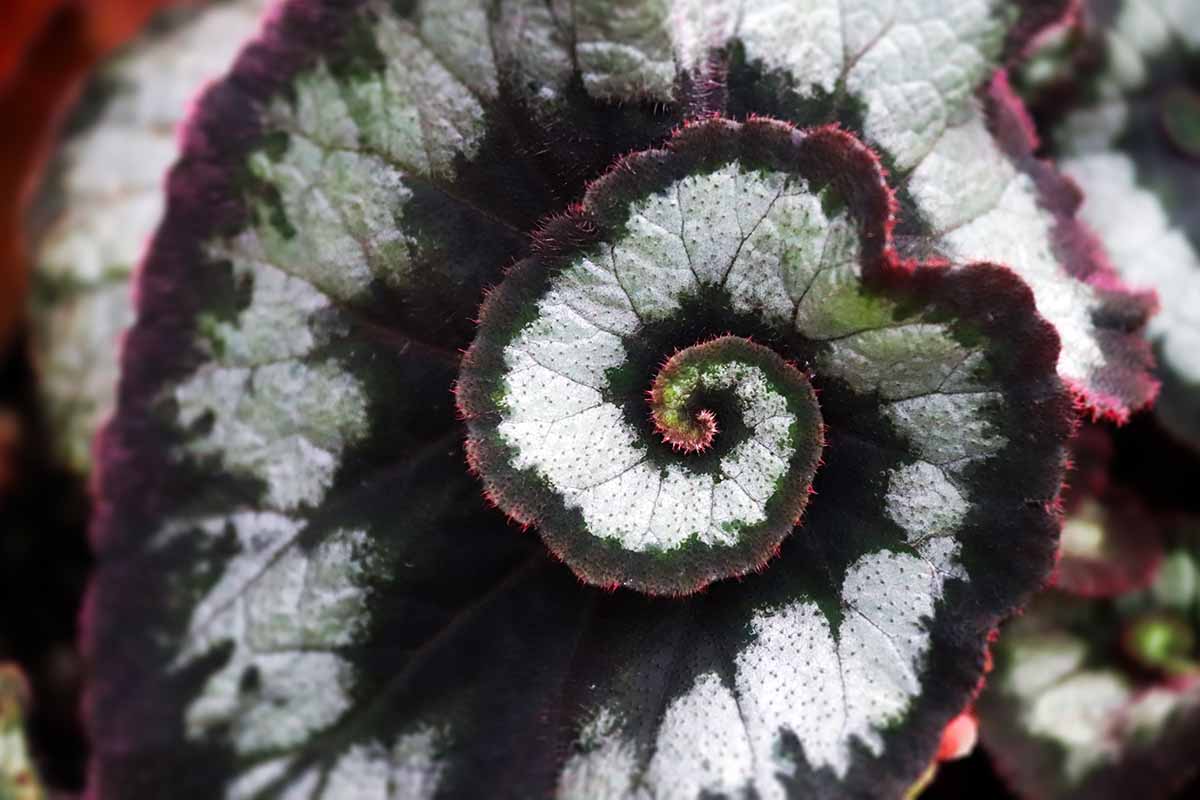
Tuberous augustia types can also have these markings.
Angel Wing Shape
Some have leaves that look like the angel wings depicted in classic paintings by Michelangelo Caravaggio, Raphael, Vernet, and Thayer.
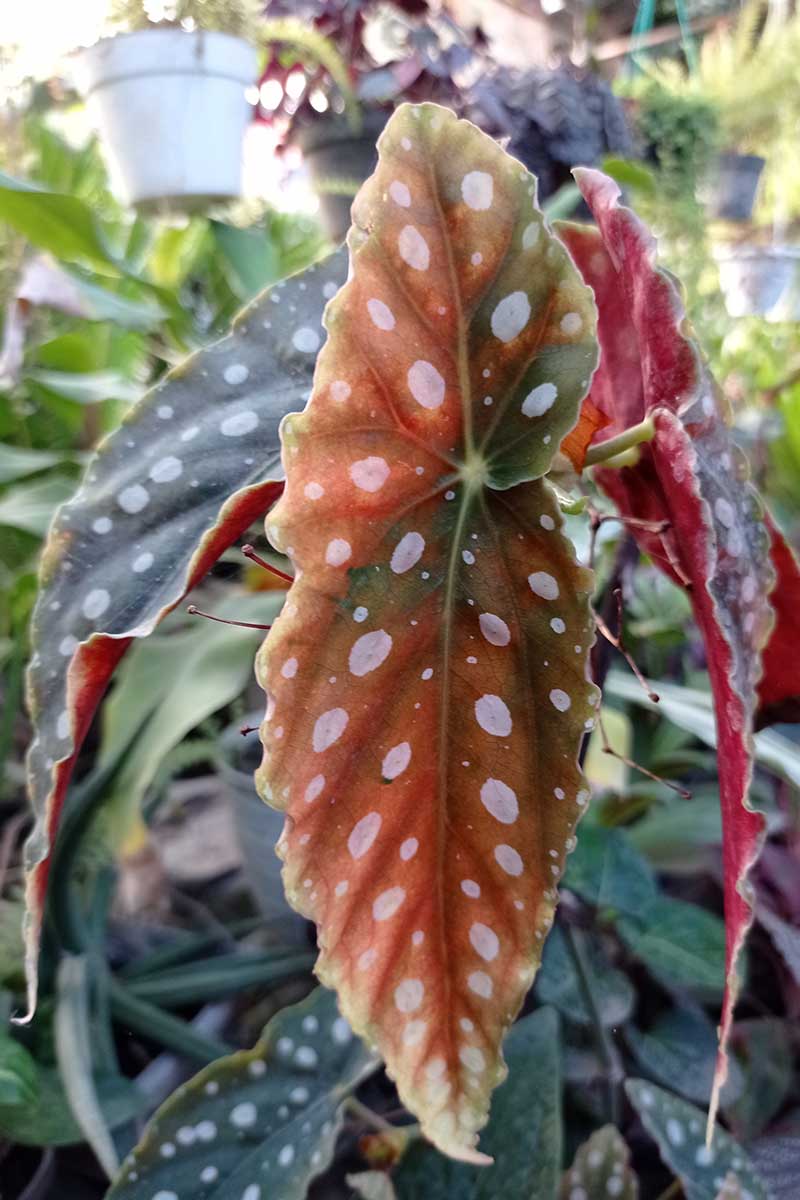
The leaves typically appear singly, so you have to imagine that the poor angel lost one wing somewhere along the way.
If yours has this leaf shape and it’s attached to a cane-like stem, you can be sure you have a rhizomatous, cane-like type.
Many are hybrids or cultivars of B. aconitifolia, B. coccinea, B. listadaand, or B. maculata, to name a few.
Fern-Like Leaves
There are a few types out there that look a bit like ferns. Fern begonia (B. bipinnatifida) is, by far, the most common.
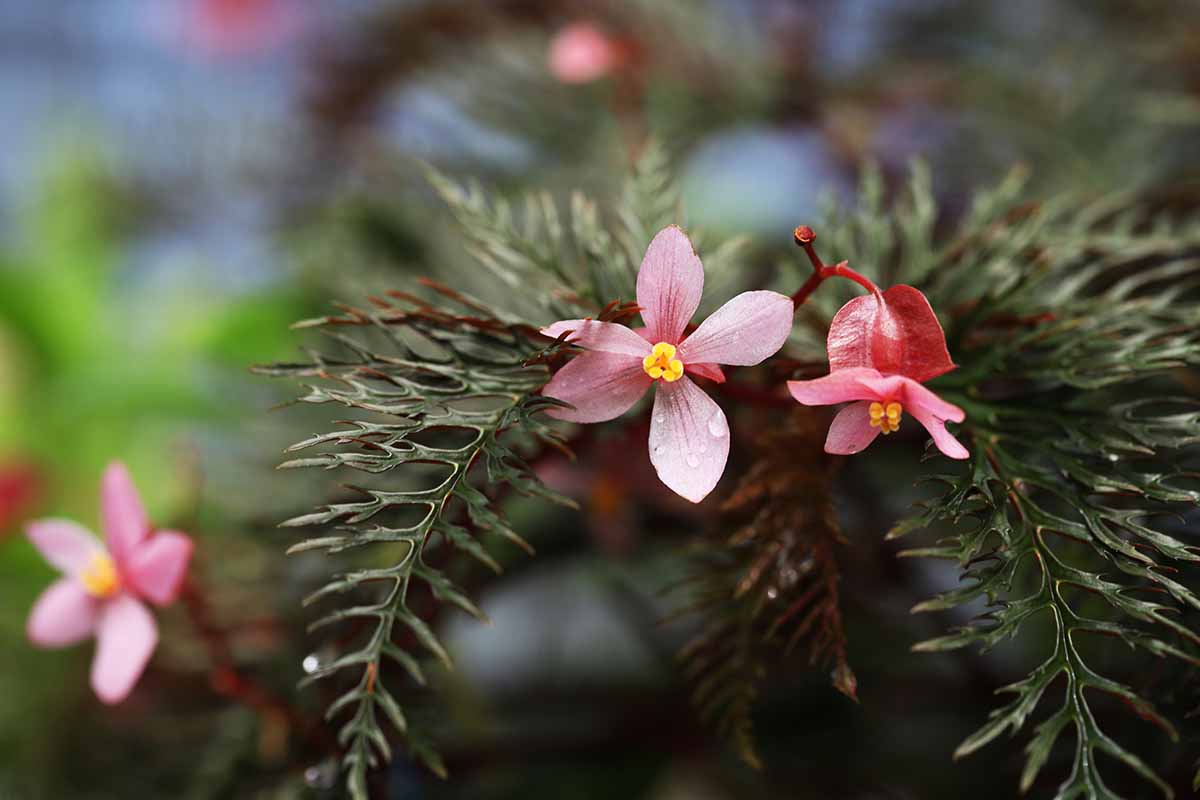
Given its adoration for hot, humid environments, it has gained a stellar reputation as a terrarium plant.
This rhizomatous type has fleshy green and maroon leaves.
Strappy Leaves
Not all begonias have wide leaves. Some are narrow and strappy, resembling those of lilies or even grass.
B. herbacea and B. lanceolata are rhizomatous, and often confused with one another, while B. komoensis and B. bogneri have tubers.
Peltate Leaves
Some begonias have leaves that look like little umbrellas, with the petiole attached to the underside of the leaf somewhere near the middle.

These include the rhizomatous B. leprosae, with its hairless, asymmetrical green leaves and small flowers, as well as B. sudjanae with its light green, hairy asymmetrical foliage.
Palmate Leaves
If the leaves of the plant look like the palm of a hand with an odd number of finger-like leaflets, it’s probably fibrous B. aconitifolia, tuberous B. dregei, fibrous B. luxurians, rhizomatous B. palmata, or one of the many rex hybrids.
So Many Begonias, So Little Time
Alright, so even the most experienced begonia grower struggles now and then to figure out what they’re looking at, but hopefully, you feel a bit better equipped to get out there and identify away.

As long as you can look at the roots, stems, and leaves, you’re armed with the tools you need to do some sleuthing.
What do the leaves and stems of your plant look like? Are you having trouble narrowing it down? Let us know in the comments and share some pictures with us, and maybe we can help!
Then, continue on your begonia journey by checking out a few of our other guides next:

